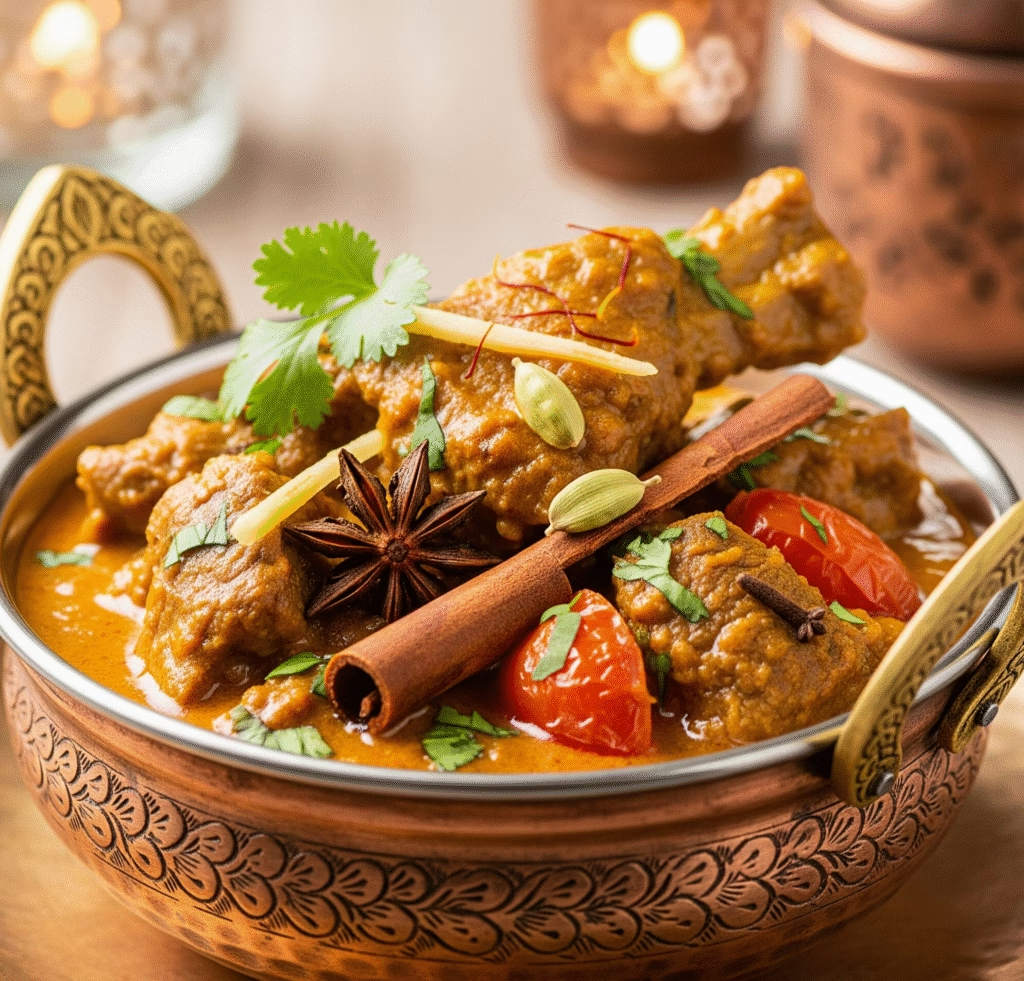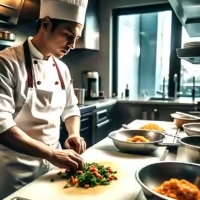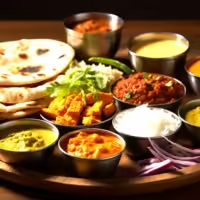
Posted by Reviewtale
- Jun 23, 2025
- 317
- 0
How to Write the Perfect Food Review

Food reviews are nothing new in today’s digitized world. They have become an integral part of our decision-making process when browsing restaurants or cafes on platforms like Google, Yelp, TripAdvisor, Zomato, or Swiggy. Most of us tend to choose a restaurant based on its review ratings. Similarly, after dining at a particular place, we often feel compelled to leave a review based on our experience. Sometimes, customers use reviews to express frustration or dissatisfaction, while others share their positive experiences and appreciation through thoughtful feedback. Either way, food review plays a crucial role in shaping public perception and guiding future diners.
Whether you are a passionate foodie or an aspiring writer, crafting a compelling food review is an art that goes beyond simply describing what’s on your plate. A good food review captures the essence of a dining experience, blending vivid descriptions, honest impressions, and a dash of storytelling to transport readers to the table with you. A well-written food review has the power to influence customer choices, build restaurant reputation, and establish the authority of the reviewer. In this post, we’ll explore the key ingredients for writing a food review that not only informs but also entertains and engages your audience—helping you sharpen your writing skills and leave your readers hungry for more.
What Makes a Food Review Stand Out
A perfect food review is not just about stating whether the food was “good” or “bad.” It is an artful combination of objective critique, sensory detailing, cultural awareness, and audience engagement. The key lies in storytelling—telling the story of the meal, the ambiance, the staff, and the overall experience.
1. Begin With a Captivating Introduction
Your introduction should instantly capture the reader’s attention. Briefly mention:
- The name and location of the restaurant
- Type of cuisine
- Reason for your visit (e.g., recommendation, curiosity, occasion)
Example: Nestled in the cultural heart of Kolkata, Balwant Singh Dhaba is more than a century-old food haven that draws everyone from early risers to late-night tea lovers. We recently visited this iconic establishment to sample their signature steamed tea and doodh cola, and here’s our honest take.
Clearly stating the reason for your visit may seem simple, but it plays a crucial role in strengthening the authenticity of your review. It provides context for your experience and adds credibility to your perspective as a reviewer. Whether you’re there for a casual meal, a special occasion, or a business meeting, mentioning it helps readers better relate to and trust your insights.
2. Describe the Ambiance and Setting
Before jumping into the food, give your readers a sense of place.
Use These Questions to Guide Your Description:
- Is the ambiance casual, upscale, or themed?
- What kind of music, if any, is playing?
- Is the seating comfortable and the lighting suitable?
- Was it family-friendly, romantic, or ideal for solo dining?
Example: The dhaba exudes an old-world charm with wooden benches, steel plates, and a constant clinking of glasses. The walls echo decades of history, while a subtle aroma of chai lingers in the air—comforting and nostalgic.
When writing a food review, it’s important to remember that the article is not for the reviewer themselves, but for the readers—those who may become potential customers of the restaurant. Therefore, the food review should be presented in a way that paints a vivid and accurate picture of the entire dining experience. From ambiance and service to food quality and pricing, every detail should help the reader visualize the setting and assess whether it aligns with their expectations. Such insights effectively communicate the restaurant’s standards, enabling readers to determine if it suits their preferences and occasion.
3. Dive Deep into the Menu and Dishes Ordered
This is the core of your food review. Highlight each item you ordered using descriptive and sensory-rich language. Talk about:
- Presentation
- Aroma
- Texture
- Flavour balance
- Portion size
- Temperature at which the food was served
Use phrases that help the reader imagine the food, such as:
- “Chicken biryani that burst with the aroma of saffron and ghee”
- “Lassi thick enough to spoon, with just the right amount of sweetness”
- Naan that is buttery with crispy edges and a soft, fluffy center”
Pro Tip: Use bold for dish names to improve readability.
Example: We started with their famous Steamed Tea—served in a kullad, this unique take on chai is smooth, aromatic, and surprisingly frothy without the typical heaviness. Next, the Doodh Cola turned heads with its bizarre yet oddly satisfying combination of milk and Coca-Cola. Our final pick, the Punjabi Thali, included rajma, dal makhani, paneer butter masala, and tandoori roti—each dish spiced delicately and bursting with flavour.
In the example above, the reviewer has clearly outlined what was ordered, with the sequence forming a coherent and engaging narrative. At this stage, mentioning the ‘presentation’ of the dishes is particularly relevant when reviewing upscale or fine-dining restaurants. However, equally important—and often overlooked—are aspects such as flavour, texture, portion size, and serving temperature. These details provide your readers with honest and valuable insights that go far beyond simply stating that ‘the food was tasty.’
In particular, ‘portion size’ deserves attention, as it is directly tied to the pricing and overall value perception. For many potential diners, understanding whether a dish offers fair quantity for its cost can heavily influence their decision to visit. Including such specifics ensures your food review remains both informative and trustworthy.
4. Evaluate the Service
Food alone doesn’t complete the experience; the hospitality matters too.
Comment on:
- Staff friendliness and attentiveness
- Promptness of service
- Knowledge of the menu
- Special gestures (e.g., welcome drinks, chef’s recommendations)
Example: Even with the busy crowd, the staff remained exceptionally courteous and attentive. They took time to explain what made their doodh cola special and checked in regularly to ensure our needs were met.
The quality of service at a restaurant should be addressed clearly and honestly in any food review. It is just as important as the taste of the food and plays a vital role in shaping a customer’s overall experience. In fact, great service can often be the deciding factor in whether a customer chooses to return. For this reason, restaurants must pay close attention to the professionalism and behaviour of their staff.
To put it into perspective—just as we might lose our appetite due to rude behaviour at home, poor service at a restaurant can similarly ruin the dining experience. However, unlike informal settings, restaurants operate professionally and charge for both food and service—either directly through service charges or indirectly through pricing. Therefore, their service standards must be polished and consistently high.
It is the reviewer’s responsibility to evaluate and mention the service honestly and thoughtfully, providing potential customers with a well-rounded understanding of what to expect.
5. Highlight Unique or Signature Offerings
Identify the dishes or experiences that set the restaurant apart. This not only helps the reader but also improves your SEO by targeting long-tail keywords like “best steamed tea in Kolkata” or “must-try drinks in Kolkata.”
Example: The Steamed Tea is the undisputed star of Balwant Singh Dhaba, a unique tradition that sets it apart. This is a must-try and reason enough to visit.
When crafting a compelling food review, make sure to spotlight the must-try dish on the menu. Clearly identifying the standout item not only guides potential customers toward the restaurant’s signature offering, but also helps the establishment strengthen its brand identity around what it does best. For diners, this recommendation provides valuable insight into what they shouldn’t miss, while for the restaurant, it can serve as a unique selling point (USP) that sets it apart from competitors. To make your review even more helpful, briefly explain what makes this dish exceptional—whether it’s a unique flavour, a special preparation, or a locally sourced ingredient—so readers understand why it deserves their attention.
6. Offer Honest Criticism Constructively
Even a great meal may have flaws. Your credibility increases when you mention negatives tactfully.
Phrase it like:
- “While the food was excellent, the wait time stretched a bit longer than expected.”
- “The dessert menu was limited, leaving us wanting more variety.”
Avoid overly harsh or rude comments. Your tone should reflect professionalism and objectivity.
7. Include Practical Information
Readers value details that aid their visit planning.
Consider Adding:
- Opening and closing hours
- Pricing (price for two or per item)
- Parking availability
- Accessibility
- Dining options (dine-in, takeaway, delivery)
- Contact info or social handles
Example: Open 24/7, Balwant Singh Dhaba is a rare gem that welcomes diners at any hour. With an average meal for two costing just ₹300, it’s a budget-friendly option, especially for college students and working professionals nearby.
8. Use High-Quality Photos and Captions
A picture speaks louder than words—include:
- Images of individual dishes
- Table setting
- Interior and exterior of the restaurant
Add SEO-rich captions, such as:
- “Close-up of Balwant Singh’s famous steamed tea”
“Traditional Punjabi thali served hot with fresh tandoori roti”
9. Conclude With a Clear Verdict
Wrap up your review with a final judgment.
Use a rating scale, if relevant (out of 5 stars or 10 points), and summarize:
- Would you recommend this place?
- Who would enjoy it most (families, solo diners, groups)?
- Will you revisit?
Example: Overall, Balwant Singh Dhaba combines cultural charm with culinary satisfaction. Whether you’re in the mood for a nostalgic sip of chai or a hearty North Indian meal, this place delivers. We’d rate it 4.7 out of 5 stars and highly recommend it for chai lovers and food explorers alike.
10. SEO Optimization Tips for Food Review
To ensure your review ranks well:
- Use keyword-rich headers (like “Best Street Food in Kolkata”)
- Include long-tail keywords
- Link to related blog posts
- Optimize image alt text
- Structure your review for featured snippets
Final Thoughts
Crafting the perfect food review is a blend of detailed observation, expressive writing, and SEO-smart structuring. Whether you’re writing for a personal blog or a platform like Review Tale, each review is an opportunity to build trust, guide fellow foodies, and establish your brand as a trusted voice in the food community.
In conclusion, writing a good food review is all about balancing honest, detailed descriptions with thoughtful recommendations that truly capture the dining experience. By highlighting the must-try dishes, you not only provide valuable guidance to fellow food lovers but also help restaurants showcase their unique strengths. Remember, a well-crafted review goes beyond taste—it tells a story that connects readers to the flavours, ambiance, and passion behind every plate. So next time you sit down to write a food review, keep these tips in mind to create engaging, insightful content that benefits both customers and eateries alike.
By consistently crafting thoughtful, honest, and engaging food reviews, contributors not only build trust with readers but also support platforms like Review Tale, which are dedicated to amplifying genuine culinary voices. At Review Tale, we empower food reviewers by offering a space to publish their experiences, connect with a community of food lovers, and influence dining choices across the region. A perfect food review doesn’t just inform—it inspires, and that’s exactly the kind of storytelling Review Tale is proud to showcase and support.
Recommended Posts
- Feb 1, 2025
- 349 read
How Behind-the-Scenes Food Content Boosts Visibility & Engagement Table of ContentsIntroductionThe Power...
Read Article- Jan 29, 2025
- 320 read
7 Effective Ways to Use Customer Reviews to Build Trust Table of...
Read Article- Jan 19, 2025
- 760 read
The Story Behind Your Business: How Sharing It Attracts Customers & Builds...
Read Article- Jan 18, 2025
- 497 read
Unforgettable Dining Experiences: How a Unique Selling Proposition Can Elevate Your Restaurant...
Read Article- Jan 16, 2025
- 1252 read
What Unique Aspects of Your Restaurant, Cloud Kitchen, or Café Set You...
Read Article- Jan 12, 2025
- 658 read
How to Remove Negative Reviews From Google? Negative reviews on Google can...
Read Article- Jan 3, 2025
- 343 read
Table of Contents IntroductionThe Origins of Fast FoodNutritional Myths and RealitiesConvenience vs....
Read Article- Dec 25, 2024
- 342 read
6 Essential Steps for Restaurants: Masterfully Choose the Right Target Customers Choosing...
Read Article- Nov 16, 2024
- 316 read
Tips and Tricks to Optimize Your Restaurant Profile: Improve Your Online Visibility...
Read Article










1 comment
Food Reviewer: 5 Steps to Unlock Your Passion